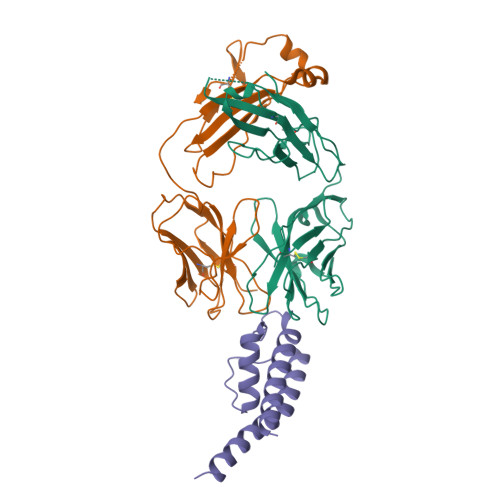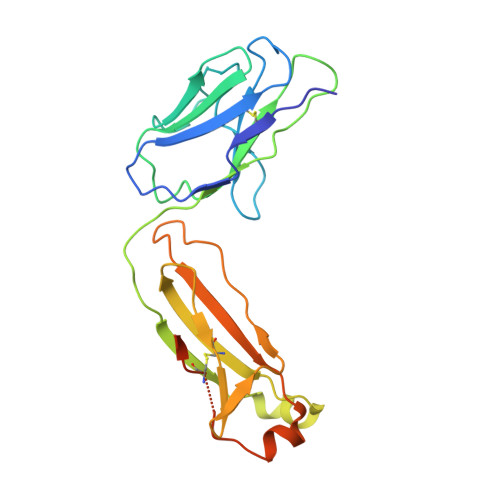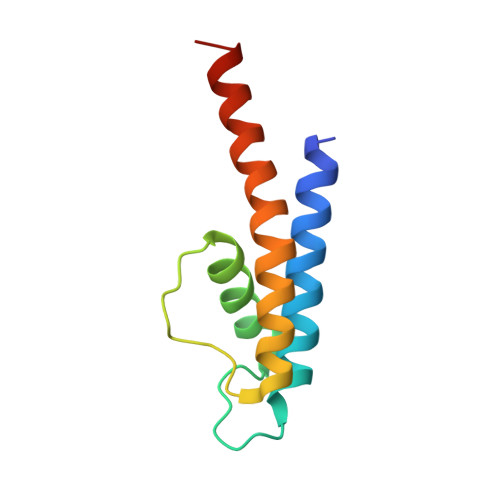A distinct mechanism of C-type inactivation in the Kv-like KcsA mutant E71V.
Rohaim, A., Vermeulen, B.J.A., Li, J., Kummerer, F., Napoli, F., Blachowicz, L., Medeiros-Silva, J., Roux, B., Weingarth, M.(2022) Nat Commun 13: 1574-1574
- PubMed: 35322021
- DOI: https://doi.org/10.1038/s41467-022-28866-9
- Primary Citation of Related Structures:
7MHR, 7MHX, 7MJT, 7MK6, 7MUB - PubMed Abstract:
C-type inactivation is of great physiological importance in voltage-activated K + channels (Kv), but its structural basis remains unresolved. Knowledge about C-type inactivation has been largely deduced from the bacterial K + channel KcsA, whose selectivity filter constricts under inactivating conditions. However, the filter is highly sensitive to its molecular environment, which is different in Kv channels than in KcsA. In particular, a glutamic acid residue at position 71 along the pore helix in KcsA is substituted by a valine conserved in most Kv channels, suggesting that this side chain is a molecular determinant of function. Here, a combination of X-ray crystallography, solid-state NMR and MD simulations of the E71V KcsA mutant is undertaken to explore inactivation in this Kv-like construct. X-ray and ssNMR data show that the filter of the Kv-like mutant does not constrict under inactivating conditions. Rather, the filter adopts a conformation that is slightly narrowed and rigidified. On the other hand, MD simulations indicate that the constricted conformation can nonetheless be stably established in the mutant channel. Together, these findings suggest that the Kv-like KcsA mutant may be associated with different modes of C-type inactivation, showing that distinct filter environments entail distinct C-type inactivation mechanisms.
Organizational Affiliation:
Department of Biochemistry and Molecular Biology, The University of Chicago, 929 E 57th Street, Chicago, IL, 60637, USA.




















